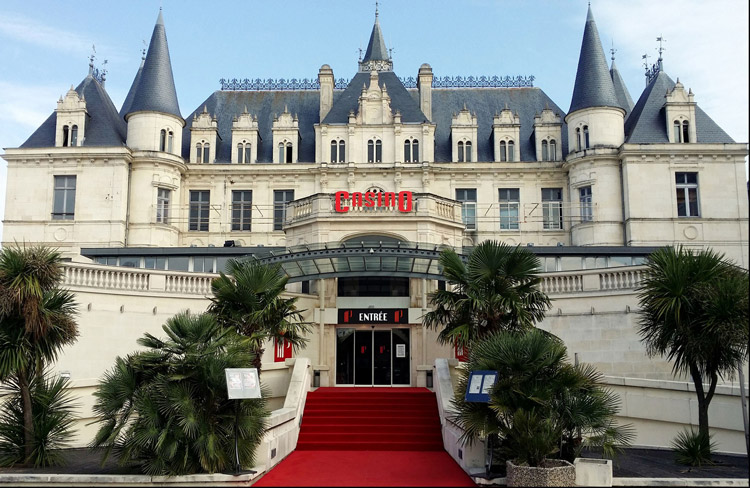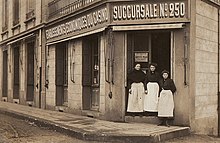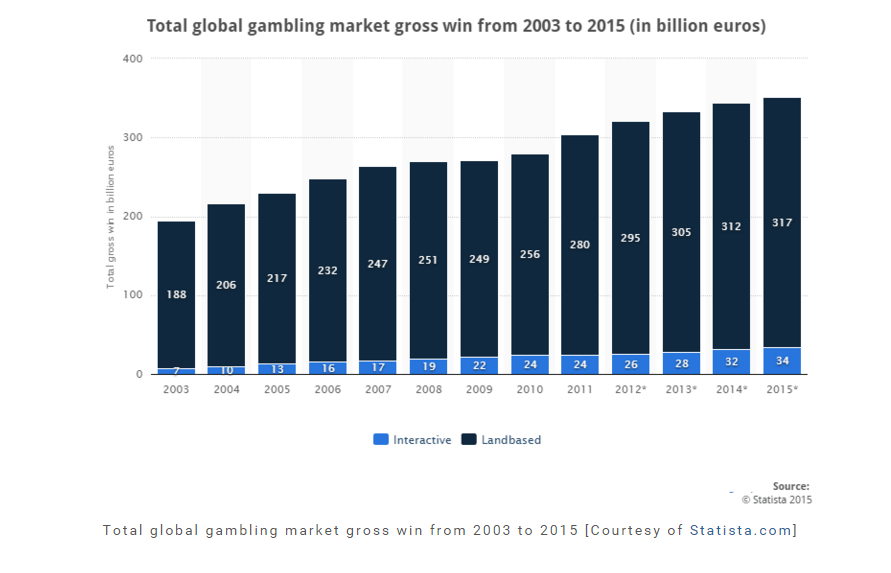Casino Dans La Region Centre
| La Région Centrale | |
|---|---|
| Directed by | Michael Snow |
| Cinematography | Pierre Abbeloos |
| Distributed by | Canadian Filmmakers Distribution Centre |
| |
| 180 minutes | |
| Country | Canada |
- Casino Dans La Region Centre New York
- Casino Dans La Region Centre La
- Casino Dans La Region Centre De
- Casino Dans La Region Centre Canada
Casino Dans La Region Centre New York
La Région Centrale is a 1971 experimental Canadian film directed by Michael Snow. The film is 180 minutes long and shot over a period of 24 hours using a robotic arm, and consists entirely of preprogrammed movements.
- 4Release
At the Palace Casino you will find 24 hour live casino action and fine dining (non-smoking facility) only 20 minutes north of Portland at exit 16 off I-5. Palace La Center HOME JACKPOTS GAMES. Palace La Center - 318 Old Pacific Hwy N, La Center, Washington 98629 - Rated 3.8 based on 7 Reviews 'Stopped in to have breakfast at The Lucky Dragon.
Description[edit]
La Région Centrale is three hours long, composed of seventeen shots of an uninhabited mountainous landscape.[1] Between each take, the screen is black with a white X in the center.[2] In the beginning, the camera moves to capture its surroundings with slow, continuous gestures. Over the course of the film, the movement crescendos as the camera spins rapidly.[3]
Development[edit]
Snow had the idea in 1964 to create a film where a camera moved 'in every direction and on every plane of a sphere'. During the late 1960s he created three films that experimented with camera movement: Wavelength, Standard Time, and <--->. He researched machines that could automatically move a camera in complex ways, particularly surveillance devices.[3] The Canadian Film Development Corporation gave Snow a grant of $28,000, and he received additional funding from the Famous Players chain of theatres.[4][5]

Casino Dans La Region Centre La
At the recommendation of IMAX co-founder Graeme Ferguson, Snow contacted Pierre Abbeloos, an engineer at the National Film Board of Canada.[3] He commissioned Abbeloos to construct a 'Camera Activating Machine' (CAM), a robotic arm on which a 16 mm camera could be mounted. Abbeloos took a year to design and build the device. To generate a control signal for the CAM, Abbeloos used the selsyn from the Arriflex 16ST camera and converted it into a spectrum of frequencies sent to the CAM's control box. This operated the camera's zoom and determined the CAM's motion through a series of tones.[3][6]
Production[edit]
Snow wanted to film a location with no traces of human activity.[7] He originally considered the countryside north of his mother's birthplace of Chicoutimi in Saguenay, Quebec as well as Kapuskasing or Timmins, both mining areas that his father had surveyed in Northern Ontario.[5] He scouted northern Quebec and found a mountain 160 km (100 mi) north of Sept-Îles.[7][8]
Snow shot La Région Centrale from September 14 to 20, 1970 with his wife Joyce Wieland, Abbeloos, and Bernard Goussard. They chartered a helicopter to transport them to the mountain.[3] Snow and his team were shooting for five days, producing sixty hours of footage.[6] He edited the film during a residency at the Nova Scotia College of Art and Design.[1]

For the film's soundtrack, Snow wanted to use the tones that controlled the CAM. He found it difficult to record the sound directly onto film in sync with the image; instead, he used a modified Revox to record the tones coming from the CAM's control box on quarter-inch cartridges. He dubbed the sound in post-production.[3]
Release[edit]
La Région Centrale was released in 1971. At the National Gallery of Canada, the film was exhibited along with the CAM, to which Abbeloos added a CCTV camera. The CAM responded to passersby with a 30-minute sequence of pre-programmed movements. When the film was shown at the Center for Inter-American Relations in 1972, Snow presented the modified CAM as a video sculpture titled De La.[3]
 Upon his desertion, he was recruited by the drug lord and with around 30 other soldiers to work as the enforcers of the, forming the paramilitary group known as Los Zetas. His torture methods earned him the nickname 'El Verdugo' ('The Executioner'), particularly for killing his victims by feeding them to lions and tigers he kept in a ranch.Lazcano died in a with the on 7 October 2012.
Upon his desertion, he was recruited by the drug lord and with around 30 other soldiers to work as the enforcers of the, forming the paramilitary group known as Los Zetas. His torture methods earned him the nickname 'El Verdugo' ('The Executioner'), particularly for killing his victims by feeding them to lions and tigers he kept in a ranch.Lazcano died in a with the on 7 October 2012.
Critical reception[edit]
Wyndham Wise commented,
'In a brilliant convergence of form and content, camera movement becomes the reason d’etre. Rarely, if ever, has a film so clearly delineated the role of this machine in our reception and perception of the objected filmed. To make the film, Snow worked with a technician to design a mechanized camera that was able to move without human intervention in every direction imaginable. To further erase the influence of humans, Snow filmed in the remote reaches of Northern Quebec, where his camera roamed the landscape, in a manner both systematic and arbitrary. It’s both an exhilarating celebration of cinema’s unique qualities and a clever joke on the landscape tradition in Canadian art.'[9]
La Région Centrale received five critics' votes and two directors' votes in the 2012 Sight & Sound polls of the world's greatest films.[10] The film is now part of Anthology Film Archives' Essential Cinema Repertory collection.[11]
Of course SEO, PPC, media advertising, exhibitions and other offline activities should also be part of the bigger strategy (after all diversity always increases your chances of success) — but if we compare investments and outcome, affiliate marketing often wins the ROI competition.  Who are affiliates?Affiliates are people who use their websites to bring traffic to your online casino. They usually have vast experience as casino users and run blogs or do live streaming to share their gaming experience with other players. While for other industries it may differ, in online gaming affiliates are quite often players themselves. Let’s have a deeper insight into who affiliates are, what benefits they bring to an online gaming business, and how you can make the best use of affiliate partnerships.
Who are affiliates?Affiliates are people who use their websites to bring traffic to your online casino. They usually have vast experience as casino users and run blogs or do live streaming to share their gaming experience with other players. While for other industries it may differ, in online gaming affiliates are quite often players themselves. Let’s have a deeper insight into who affiliates are, what benefits they bring to an online gaming business, and how you can make the best use of affiliate partnerships.
Casino Dans La Region Centre De
References[edit]
Casino Dans La Region Centre Canada
- ^ abLangford, Martha (2014). Michael Snow: Life & Work(PDF). Art Canada Institute. pp. 21–40. ISBN978-1-4871-0004-9. Retrieved February 23, 2019.
- ^Kellman, Tila L. (2006). Figuring Redemption: Resighting My Self in the Art of Michael Snow. Wilfrid Laurier University Press. p. 116. ISBN978-0-88920-747-9.
- ^ abcdefgWhite, Kenneth (2015). 'Strangeloves: From/De la région centrale, Air Defense Radar Station Moisie, and Media Cultures of the Cold War'. Grey Room (58): 51–52. doi:10.1162/GREY_a_00162.
- ^Marcorelles, Louis (1973). 'Snow Storms Italy'. Cinema Canada. No. 6. p. 64.
- ^ abSnow, Michael (1994). The Collected Writings of Michael Snow. Wilfrid Laurier University Press. pp. 56–59. ISBN978-0-88920-243-6.
- ^ abLeitner, Florian (2013). 'On Robots and Turtles'. Discourse. 35 (2): 267.
- ^ abCornwell, Regina (1975). 'Michael Snow's La Région Centrale'. MoMA. No. 6. Museum of Modern Art. p. 4.
- ^Noguez, Dominique (1979). 'On Wavelength'. In Kunz, Martin Kunz (ed.). Michael Snow. Kunstmuseum Luzern. p. 106. ISBN978-3-267-00001-3.
- ^Wise, Wyndham, ed. (2001). Take One's Essential Guide to Canadian Film. University of Toronto Press. p. 179.
- ^'Votes for La Région Centrale (1971)'. British Film Institute. Retrieved January 17, 2017.
- ^'Essential Cinema'. Anthology Film Archives. Retrieved February 24, 2018.
External links[edit]
- La région centrale on IMDb
- La Région Centrale at the Canadian Filmmakers Distribution Centre